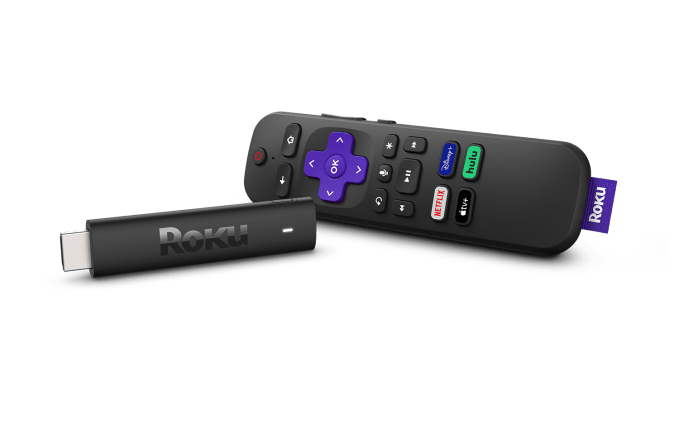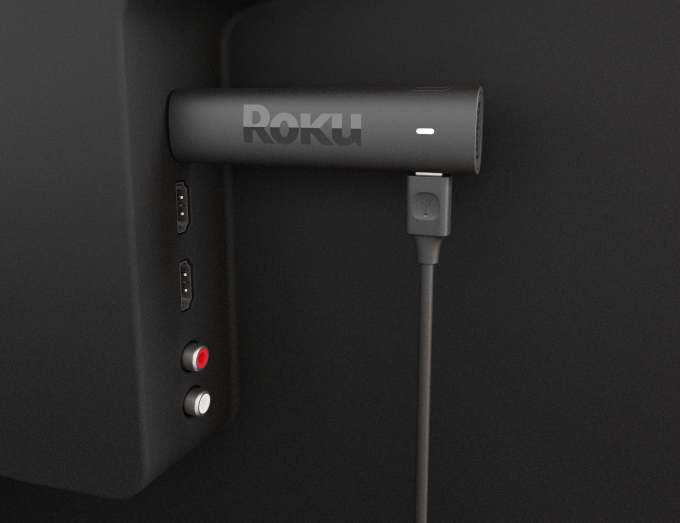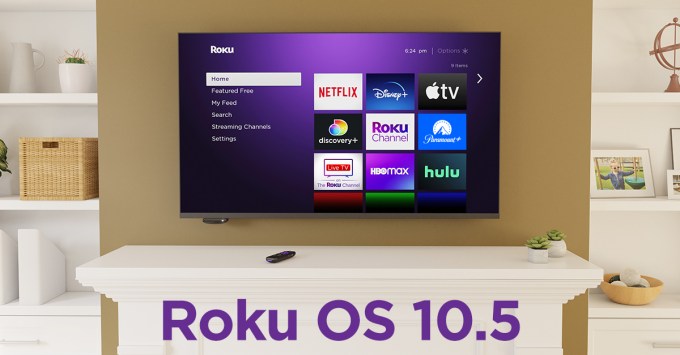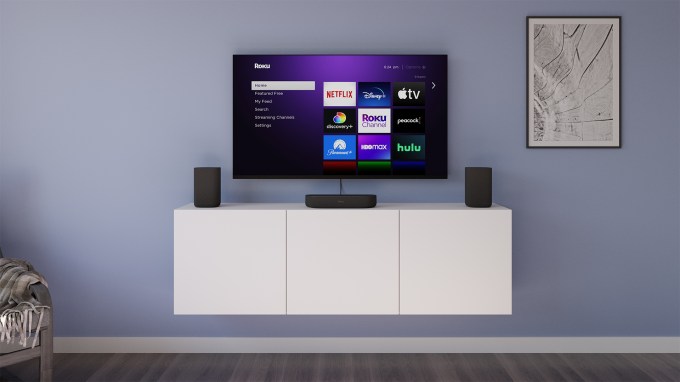- September 20, 2021
- by:
- in: Blog
The Station is a weekly newsletter dedicated to all things transportation. Sign up here — just click The Station — to receive it every weekend in your inbox. Hello readers: Welcome to The Station, your central hub for all past, present and future means of moving people and packages from Point A to Point B. The
The Station is a weekly newsletter dedicated to all things transportation. Sign up here — just click The Station — to receive it every weekend in your inbox.
Hello readers: Welcome to The Station, your central hub for all past, present and future means of moving people and packages from Point A to Point B.
The future of transportation beat was flooded with news this week as per ushe. There are two stories that I want to highlight here. First up, is that the first Rivian R1T electric pickup truck in “Rivian blue” rolled off the assembly line at the company’s factory in Normal, Illinois. The R1T and the upcoming R1S SUV are also now certified to be sold in all 50 states (at least online).
This marks a milestone more than a decade in the making for the automaker and its founder and CEO, RJ Scaringe, who started the company in 2009 as Mainstream Motors before adopting the Rivian name two years later. Rivian has undergone explosive growth in terms of people, backers and partners in the past few years. If the company has a successful IPO, which it confidentially filed for recently, it could grow even faster.
Next up, is Tesla and its “Full Self-Driving” beta software, which is about to become accessible to a lot more owners.
The FSD Beta v10.0.1 software update, which has already been pushed out to a group of select owners, will become more widely available starting September 24. Tesla CEO Elon Musk issued a caveat that personal driving metrics captured over a seven-day period via telemetry data will determine whether owners who have paid for its FSD software can access the latest beta version that promises more automated driving functions.
A Reddit post from several months ago provides hints on what data will be used. The poster, who has reversed engineered the Tesla app, found that the company was getting ready to implement insurance directly into the app. There will be a new safety rating page that will track an owner’s vehicle and is linked to their insurance. It’s possible that this is what Musk was referring to when he tweeted “beta button will request permission to assess driving behavior using Tesla insurance calculator. If driving behavior is good for 7 days, beta access will be granted.”
According to the Redditor, the app will track the number of times the ABS is activated, average number of hours driven daily, number of times Autopilot is disabled because alert is ignored, forward collision warnings, amount of time spent at an unsafe following distance and intensity of acceleration and braking.
This release on September 24, which will mean potentially thousands of Tesla owners trying out beta software on public roads, is going to test the will of regulators. Jennifer Homendy, the new head of the National Transportation Safety Board, told the WSJ that Tesla shouldn’t roll out this latest software update until it can address “basic safety issues.” NTSB is not a regulator; it investigates crashes and issues safety recommendations. So while her voice matters and is listened to, the NTSB cannot prevent Tesla from pushing this software update, or any other one, to owners.
Finally, TechCrunch Disrupt is here! The event kicks off Tuesday and I hope to see you all there. There’s even a photo booth (virtual) and I want you to share your photos if you use it.
As always, you can email me at kirsten.korosec@techcrunch.com to share thoughts, criticisms, opinions or tips. You also can send a direct message to me at Twitter — @kirstenkorosec.
Micromobbin’

Lane detection, pedestrian detection, advanced braking systems. These sound like driver assistance features you might find in a new SUV, sedan or truck. These days, this tech is creeping into electric scooters.
The pressure on operators to build scooters that are robust, safe and combat issues like sidewalk clutter has prompted companies to develop and equip their vehicles with advanced driver assistance features. Operators like Voi, Spin, Superpedestrian, Zipp and Bird have all started to integrate tech that can detect when someone is riding on the sidewalk or parking a scooter where it shouldn’t be. Whether through camera-based computer vision or through really accurate geopositioning software, these scooters not only know exactly where a rider is, but they can also put the brakes on or slow them down if they’re breaking the rules.
The question is, is it necessary? My view is that this wouldn’t be necessary if cities stopped offloading the cost of safety onto operators and instead invested in protected bike lanes.
Check out my ExtraCrunch story that looks deeper into the tech, which I’ve dubbed scooter ADAS.
Bird launches its shared e-bike in San Diego
Bird has an exclusive micromobility contract with San Diego State University. Bird’s bike share operation, which was officially launched in June, will be available to the 34,000 students on campus.
Brooklyn Bridge gets a dedicated bike lane
Bikers these days don’t know how good they’ve got it. I remember when I had to ring my bike bell like a mad woman trying to get pedestrians to part for me as I attempted to ride over the busy Brooklyn Bridge. Now, the iconic bridge has its own dedicated two-way bike lane. This is huge news. HUGE. I only wish I were back home to see it. And the best part is that the lane was taken from cars and given back to the people!
Compact, foldable and made in Japan
A company called Shaero just launched in Tokyo with a docked shared tiny moped that can be folded and stored inside lockers between trips. Forget scooter ADAS — more of this please!
Tax break for e-bikes
The U.S. House Ways and Means Committee proposed creating a 15 percent tax credit for e-bike purchases if you earn less than $75,000 per year. This is down from a 30 percent rebate with no income limits in the last version of the bill, which would have been way better, but I guess baby steps?
The latest e-bikes
This week a lot of new e-bikes launched. Here’s a bit of a roundup:
The Crown Cruiser is a retro-futuristic looking e-bike with inbuilt smart technologies like anti-theft tech and a gyro and accelerometer sensor that detects impact. The lightweight frame is made out of carbon fiber, it’s got long-range swappable 36V or 48V batteries with a range of 100 miles or more and its DC hub motor is so powerful the bike can hit top speeds of 31 mph. The Cruiser is currently fundraising on Indiegogo, and has received a £139,000 Sustainable Innovation grant from the UK government.
Daymak has announced the release of their Terra e-bike, part of the company’s Avvenire series. The bike comes in the Terra Deluxe (targeted MSRP of $3,495) and Terra Ultimate (targeted MSRP of $7,999). With two 15W solar panels that trickle life into the battery and multi-level pedal assist, it can get up to 60miles of range and a max speed of 20 mph. The Terra comes with built-in Bluetooth speakers and a drink holder. It also has launched with RidePoints and Daymak Drive X capabilities, which according to Daymak mean that riders can collect redeemable points via the company’s EV reward program for just riding around, and that the bike is blockchain-enabled.
Harley-Davidson is going to offer limited sales through its ebike spinoff Serial 1, of vintage-inspired electric bike model known as the limited edition S1 Series ebike.
Zaiser Motors announced that it reached its Wefunder campaign goals and has released the specs for its platform redesign, which includes the addition of a second sportier electric motorcycle, the Arrow. Its first “Electrocycle” is called the Silhouette and and has 300 miles of range with a 120 mph top speed. Both designs look like something you might make Yoshi drive on Mario Kart, complete with a shiny and bubbly red chassis. The Arrow is designed for city riders, is priced at $8,500 and has an expected range of 160 miles with a 100 mph top speed.
Active lifestyle brand Retrospec has released the Valen Rev, a moto-style electric bike that makes me want to cruise alongside a boardwalk on a California beach. Honestly, it’s a really cute-looking bike, with a retro vibe to it, a tan leather saddle and a choice between fog blue, olive green or black — all matte. It’s got a 48V motor, 6 levels of pedal assist and a 50-mile range, all for the reasonable price of $1,799.99.
— Rebecca Bellan
Deal of the week

It seemed as if the number of mobility-related SPAC deals had slowed. That brief pause was broken by Gogoro, the 10-year-old Taiwanese company best known for its electric scooters and swappable battery infrastructure.
The company has agreed to merge with Poema Global, a SPAC affiliated with Princeville Capital, in a deal that sets its enterprise valuation at $2.35 billion. If approved by shareholders. the company will trade on the Nasdaq exchange under the symbol GGR.
Gogoro stands to make $550 million in proceeds, assuming as TechCrunch Catherine Shu reports, there are no redemptions. (A growing trend I really need to address in this newsletter). Those funds include an oversubscribed private investment in public equity of more than $250 million and $345 million held in trust by Poema Global. Investors in the PIPE include strategic partners like Hon Hai (Foxconn) Technology Group and GoTo, the Indonesian tech giant created through the merger of Gojek and Tokopedia, and new and existing investors like Generation Investment Management, Taiwan’s National Development Fund, Temasek and Dr. Samuel Yin of Ruentex Group, Gogoro’s founding investor.
So why now? Founder and CEO Horace Luke provided a curious answer that I know will cause a few of my institutional investor friends to raise an eyebrow or two. Luke first explained that with fresh partnerships in place — Yadea and DCJ in China to build a battery-swapping network and Hero MotoCorp in India to launch scooters — it was time to take the company to the next level.
And he added that Gogoro decided to go the SPAC route because “you can talk a lot deeper about what the business opportunity is, what the structure is, what the partnerships are, so you can properly value a company rather than a quick roadshow. Given our business plans, it gives us a great opportunity to focus on the expansion.”
Huh. Anyone ever heard of a “quick roadshow?” Comments from some founders who have taken the traditional IPO path would suggest the contrary.
Other deals that got my attention this week …
BridgeLinx, the Lahore-based startup that operates a digital freight marketplace, raised $10 million in what is the largest seed financing round in Pakistan. Harry Stebbings’ 20 VC, Josh Buckley’s Buckley Ventures and Indus Valley Capital co-led the startup’s financing round, which Salman Gul, co-founder and chief executive of BridgeLinx, told TechCrunch completed within weeks.
Chaldal, the Bangladeshi grocery delivery startups that picks up orders from its own warehouses instead of retail stores, closed a $10 million Series C round led by Taavet Hinrikus, co-founder of Wise, Topia chief product officer Sten Tamkivi and Xploration Capital, with participation from Mir Group. The company plans to use the funds to expand into 15 new cities.
EnerVenue, a battery startup that says it has developed technology to revolutionize stationary energy storage, raised $100 million from strategic investors including Schlumberger, Saudi Aramco’s VC arm and Stanford University. The investment comes around a year after EnerVenue raised a $12 million seed. The company is planning on using the funds to scale its nickel-hydrogen battery production, including a factory in the U.S., and has entered a manufacturing and distribution agreement with Schlumberger for international markets.
GPB Capital Holdings LLC, the private-equity firm being investigated by the SEC on fraud allegations, is selling its car dealership company Prime Automotive Group for about $880 million, WSJ reports.
General Motors has invested in Oculii, a software startup that aims to improve the spatial resolution of radar sensors by up to 100-fold. The new funding, which the two companies say is in the millions, comes just months after Oculii closed a $55 million Series B.
Glovo, the Spanish on-demand delivery platform that operates a network of dark stores focused on urban convenience shopping, announced the acquisition of two regional “Instacart-style” grocery picking and delivery startups, Madrid-based Lola Market and Portugal’s Mercadão. Terms of the acquisitions are not being disclosed.
Muver, a mobile app that lets drivers earn more by managing their interactions with ride-sharing and delivery services, raised $1.2 million in a seed round led by Xploration Capital joined by Baring Vostok, Angelsdeck and Rapid Ladder Capital.
Rolls-Royce Holdings and Babcock International Group sold their combined 39% stake in air-to-air refueling company AirTanker Holdings Ltd. for 315 million pounds ($435 million) to Equitix Investment Management, Reuters reported.
Siemens wants to sell its logistics unit for roughly 500 million euro ($591 million) as part of the German industrial conglomerate’s plan to exit non-core businesses and focus on its industrial operations, Reuters reported.
UPS agreed to acquire Roadie, a platform that uses gig workers to provide local same-day delivery in the United States. Terms of the deal weren’t disclosed. The acquisition signals shipping giant’s move into same-day delivery, particularly perishable and other goods that are not compatible with the UPS network.
Volta Trucks, the EV startup, raised €37 million ($44 million) to accelerate its plans to produce and sell large cargo vehicles. The round was led by New York-based Luxor Capital Group and returning investor Byggmästare Anders J Ahlström Holding of Stockholm. New investors included U.S. electric truck and battery manufacturer Proterra and supply chain management company Agility. Volta Trucksy said it plans to pilot a fleet of vehicles in London and Paris early next year.
Policy corner

Hello everyone! Welcome back to policy corner. Remember the safety probe the National Highway Transportation and Safety Administration opened into Tesla Autopilot in August? In case your memory needs refreshing: NHTSA opened a preliminary investigation into 12 (originally eleven) incidents of Tesla cars crashing into parked emergency vehicles. The regulator ordered Tesla to hand over detailed data on the ADAS by October 22 or risk facing a fine of up to $115 million.
Earlier this week, NHTSA sent letters to 12 automakers — including Ford, VW, and General Motors — requesting data on their Level 2 ADAS to aid it in its investigation. The letter to Ford says the information request is “to gather information in support of [the agency’s] comparative analysis amongst production vehicles equipped with the ability to control both steering and braking/accelerating simultaneously under some circumstances.”
Among the data NHTSA is interested in obtaining: the number of vehicles equipped with ADAS the automaker has manufactured; how the company approaches the enforcement of driver attentiveness; other details about the system, like the conditions that would require driver take-over; as well as any consumer complaints, lawsuits, or crash reports related to the system.
Why is this news in policy corner? Well, similar to how each Supreme Court adjudication creates the law, the results of NHTSA’s investigations could also set a precedent for how ADAS is regulated writ large. The agency leveraging its broad authority to gather information could result in new standards or rules for how automakers develop and deploy ADAS in millions of cars now and into the future.
It’s important to remember that NHTSA really is empowered with a huge amount of authority — they could issue a recall of every Tesla on the road, if they so deemed that its Autopilot was sufficiently unsafe.
Speaking of Tesla and GM … it looks likely that the per-manufacturer cap disqualifying the two automakers’ vehicles from the so-called “30D” $7,500 tax credit may be removed soon. They’re disqualified because each automaker has sold more than 200,000 EVs. Anyway, there are two separate proposals being debated in Congress, one in the House and one in the Senate, as part of a larger effort to overhaul and potentially dramatically expand the 30D credit (I wrote about it here). While the proposals have a few significant differences, removing the manufacturer cap isn’t one of them. What that means is a Tesla Model 3 or a new Cadillac EV would once again qualify.
One more note … Evidently, the New Jersey Board of Public Utilities halted the approval of new applications for its grant program for purchasing an electric vehicle — because the $30 million earmarked to cover the program is already nearly out of money! Under the Charge Up New Jersey program, people can apply for grants of up to $5,000 for an EV. But demand is so high that that money is already nearly gone.
— Aria Alamalhodaei
Notable news and other tidbits

Let’s dig into the news of the week …
Autonomous vehicles
Walmart has tapped Argo AI and Ford to launch an autonomous vehicle delivery service in Austin, Miami and Washington, D.C. The service will allow customers to place online orders for groceries and other items using Walmart’s ordering platform. Argo’s cloud-based infrastructure will be integrated with Walmart’s online platform, routing the orders and scheduling package deliveries to customers’ homes. Initially, the commercial service will be limited to specific geographic areas in each city and will expand over time. The companies will begin testing later this year.
Batteries
Redwood Materials, the company started by former Tesla co-founder and CTO JB Straubel that aims to create a circular supply chain for batteries, is expanding beyond recycling. Redwood announced plans to simplify the supply chain by producing critical battery materials and is currently scouting a location for a new million-square-foot factory, at a cost of over $1 billion.
That factory will be dedicated to the production of cathodes and anode foils, the two essential building blocks of a lithium-ion battery structure — up to a projected volume of 100 gigawatt-hour per year’s worth of materials, enough for one million electric vehicles, by 2025.
Electric vehicles
Ford Motor announced plans to invest another $250 million and add 450 jobs to increase production capacity of its upcoming F-150 Lightning to 80,000 all-electric trucks annually. The announcement comes after receiving more than 150,000 pre-orders for the all-electric pickup truck. The additional funds and jobs will be spread out across its new Rouge Electric Vehicle Center in Dearborn, Michigan, Van Dyke Electric Powertrain Center and Rawsonville Components Plant.
Lucid Group, the all-electric automaker slated to go public this year, said one variant of its upcoming luxury Air sedan has an EPA range of more than 520 miles. The official rating of the Lucid Air Dream Edition Range variant pushes Lucid past Tesla, a company that has long dominated in this category. This announcement not only gives Lucid bragging rights, it reveals a bit about the company’s strategy to offer a variety of versions of the Air sedan with prices ranging between $169,000 and $77,400.
The National Transportation Safety Board announced via Twitter it will investigate a Tesla vehicle crash that killed two people in Coral Gables, Florida. It is not clear if the company’s advanced driver assistance system Autopilot was engaged at the time.
Polestar has shared a few more details of its future electric SUV, including that it will have only two rows of seats, offer single-motor and dual-motor versions and have a powertrain that goes beyond EV versions of the Volvo XC90, Car and Driver reported.
People news
Clive Sinclair, the British entrepreneur and inventor behind the ZX personal computer, pocket calculator and numerous other consumer electronics, died at age 81. Sinclair was also interested in electric vehicles. He invented the infamous Sinclair C5 electric trike, which would spectacularly fail in 1982 only to gain a cult following many years later. Sinclair would invent other electric vehicles, including the electric bike called Sinclair Zike in 1992. He actually spent much of his time in the past 12 years working on personal transportation vehicles like the foldable A bike.
Ford Motor has hired Mike Amend as its chief digital and information officer as the automaker seeks to expand into software, subscriptions and in-vehicle connectivity. Amend, who was president of Lowe’s Online for three years, will focus on Ford’s “use of data, software and technology” — all areas central to Ford’s new Ford+ strategy.
Misc. bits
CNBC writes about headlights and how they’re undergoing a technological revolution that has regulators trying to catch up.
Hyundai, which owns a controlling interest in Boston Dynamics, announced the arrival of the “Factory Safety Service Robot,” essentially a modded up version of Spot designed for safety inspections at factories. Naturally, Hyundai is starting close to home, rolling out its first pilot at a Seoul plant for subsidiary, Kia.
Fair Financial Corp., the car subscription startup, is considering bankruptcy to eliminate debt, reported Automotive News. The company now wants to start a vehicle retailing platform called Fair Technologies.
Reilly Brennan of Trucks VC has launched a jobs board called Mobility Jobs that is focused on the future of transportation. Reilly, who has his own well regarded newsletter, is also fan of TechCrunch and so he’s giving us this code: THESTATION, which gives you dear reader 100% off if you post a job using that special code. Cheers!















